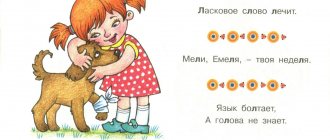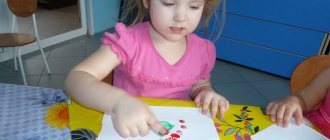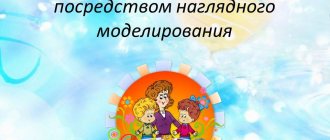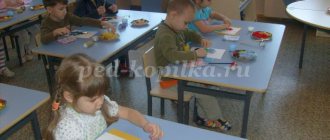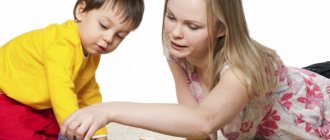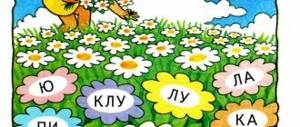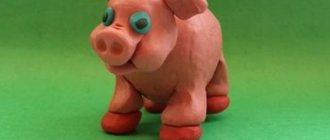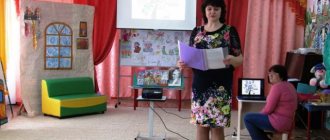Speech game with toys 3. Bunnies
Let's get acquainted with toy bunnies: part 1.
We teach kids to describe pictures of toys, compare, analyze, use verbs exactly according to their meaning (distinguish between perfective and imperfective verbs), use diminutive suffixes (baby, bunny, hare, hare, eyes, ears, tail, etc. ).
To play, you will need a picture or three toy bunnies, which you will dress in different ways. These can be bears, dolls and any other toys instead of bunnies.
The first bunny is Shustrik. He is wearing a jacket and trousers. The second is Toropyzhka. He is wearing a jacket that is buttoned incorrectly - as a result, one bottom edge is higher than the other, sticks out unattractively, his hat is on his side, his scarf is tied sloppily on his side. The third one is Catch-up. He hasn't had time to get dressed yet, he's only wearing trousers.
Look at pictures or toys with your child and tell him a story about three bunnies.
“Vanya and Tanya live with three toy bunnies. The first bunny is always in a hurry, in a hurry and therefore does a lot of things wrong. That’s what the guys called him – Toropyzhka. Find it in the picture. How did you guess that it was Toropyzhka?
The second bunny does everything deftly, skillfully, quickly, correctly, smartly. Can you guess what his name was? What would you call an agile, nimble bunny? Interesting names you came up with! Do you want to know what Tanya and Vanya called him? They called him Shustrik because he was very... (smart).
The third bunny is always late, does not have time, and does things very slowly and leisurely. They often tell him: “Catch up with us.” That's why they named it - what do you think? Give him a name that makes it clear that he does everything slowly. What would you call such a bunny? (Encourage any option the child has - this is his word creation, and offer your own options). And Tanya and Vanya called him that - Catch-up.
Find Shustrik and Catch-up in the picture. How did you guess that this is Shustrik, and this is Catch-Up (the child explains).
Playing riddles: part 2.
These toy bunnies are brothers. They are very similar to each other. How are they similar? (They have long ears, short tails, round eyes, small noses, they are white, fluffy, they can jump, they love carrots, etc.).
How are bunnies different? (Look at clothes, shoes, eyes, noses, what the bunnies do).
How can you call a bunny affectionately? (Bunny, bunny, bunny, bunny).
What is the affectionate name for a bunny's ears? Yes, ears.
What is an affectionate name for your nose? (nose).
Eyes - ? (eyes)
Paws - ? (paws)
Tail? (tail)
Let's play riddles. I'll wish for a little bunny, and you guess his name.
You describe a bunny - a toy or a bunny from a picture, and the child must guess his name.
“This little bunny is very cheerful. He has big blue eyes. The bunny's nose is black and small. The bunny's ears are long and his tail is short. He is wearing a red jacket and blue trousers. The jacket has a blue collar and many round buttons. The little bunny loves to sing songs. Who is this?"
Now tell me a riddle: “My little bunny... He has.... The eyes of a bunny... The little bunny has a nose... Bunny loves...” (We help the baby construct a statement - a description, giving him support - the beginnings of phrases).
Who does what: part 3.
Every morning Tanya and Vanya play with the bunnies. Look at the toys (act out a scene). Toropyzhka and Shustrik have already gotten out of bed (we show), and Catch-up is still getting up. And it always happens. Listen and guess who is doing what (the child finishes the end of the phrase by analogy).
- Shustrik has already washed his face, and Catch-up is still... (washing himself).
- Shustrik has already gotten dressed, and Catch-Up is still...(getting dressed).
- Shustrik has already brushed his teeth, and Catch-Up is still...(cleaning).
- Shustrik has already had breakfast, and Catch-up is still...(having breakfast).
- Toropyzhka and Shustrik are already getting ready for a walk, and Catch-up is still...(getting ready).
Speech game on the topic “Toys” 4. “How we play”
We learn to select actions (verbs) to an object (noun).
Tanya and Vanya love to play with toys. And they want to know how you play with your toys. Let's tell them about our games (you can use a toy phone). You “dial a number” on a toy phone and start a conversation: “Hello, Tanya and Vanya! This is Danilka calling you. How are you? We are playing, do you want to know how? Now Danilka and I will tell you”:
Danilka (your child’s name), what are we doing with the ball? We roll, throw, catch (we choose words together with the baby). If a child wants to show how he does it, let him show all the actions right there. During the demonstration of actions, he can remember new actions and name them too, or he can come up with them.
- What does the ball do? Rolls, flies, bounces, bursts, jumps, jumps, hits the floor, etc.
- What do we do with the doll? We put the doll to bed, feed, drink, dress, undress the doll, rock it, and take it for a walk.
- What does the doll do? Walks, eats, sings songs, dresses, walks, dresses up, plays, dances.
- What do we do with the car? How do we play with it? We drive, load bricks into the back, honk the horn, catch up with other cars, stop, brake.
- What does the machine do? It drives, rushes, stops, accelerates, skids, drives into a garage, brakes, rolls over, breaks down, gets stuck, drives out, overtakes other cars.
For this game you can choose any toys that your child loves.
OOD summary on the topic: “Every toy has its place”
Subject:
“Every toy has its place”
Target:
Strengthen the ability to put toys away.
Tasks:
Educational:
— Strengthen the ability to distribute toys in their places;
— Improve children’s ability to participate in carrying out collective work assignments;
- Learn independently, highlight the disorder in the environment;
Educational:
— Develop a desire for everyday work, careful attitude towards toys;
-Develop accuracy, attention, imagination, creativity;
Educational:
— Foster humane feelings and positive relationships between children;
— Cultivate the desire to work for the common good, to understand the significance of one’s work for others.
Materials:
toys: cars, dolls, dishes, cubes, pyramid; pencils; coloring books; paper; emblems on the baby's chest.
Vocabulary work
: nouns: car, doll, pyramid, cubes, cleaning, help, play area, corner, group room.
Verbs: help, help out, interact, work.
Adjectives: neat, polite, rude, bookish, artistic.
Preliminary work:
reading fiction: K.I. Chukovsky “Moidodyr”, “Fedorino’s Mountain”; memorizing Ouspensky’s poem “Everything is Alright”; conversation about work;
Methods and techniques:
gaming – didactic game; visual - looking at the playroom; practical – children’s independent activities; verbal – teacher’s story, questions.
Progress of direct educational activities.
Conversation about work.
(Children enter the group and sit on chairs)
- Guys, look what happened in the group? (Children's answers).
— Maybe someone in our group played? What changes do you see? Do you put away toys? Why do you need to put away toys? (Children's answers)
- Guys, look, what happened in our group?
- Now let's watch the scene.
Dramatization of Ouspensky's poem "Everything is Alright"
(Guys, show a scene from a poem)
Mom comes home from work, Mom takes off her boots, Mom goes into the house, Mom looks around. — Was there a raid on the apartment? - No. — Did a hippopotamus come to see us? - No. - Maybe the house is not ours? - Our. - Maybe not our floor? - Our. Seryozhka just came and we played a little. - So this is not a collapse? - No. — Didn’t the elephant dance with us? - No. - I am very happy. It turned out that I was worried in vain!
Practical activities. Cleaning toys.
- So who scattered the toys in our absence? (Children's answers)
— Why is it difficult to find a toy? (Children's answers)
- What toys are located in which play corner? What should be in the art corner? (Children's answers)
